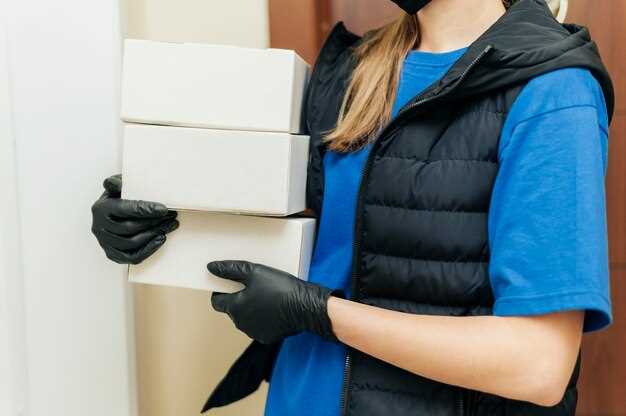Choose white glove delivery for high-value, bulky, or setup-heavy orders to protect zásilky and boost retention. The service is handled by trained technicians who manage everything from arrival to placement and demonstration, reducing the risk of damage and mishandling. theres a clear advantage when you compare standard delivery with white glove, especially for sensitive items that require careful handling and in-home placement.
In practice, this means a coordinated pre-delivery window, on-site unpacking, careful placement in the exact room, removal of packaging waste, and a brief setup or demo for the user. If you have questions during the handover, the crew can answer them on the spot and document any issues for follow-up. This approach also minimizes disruption to facilities where multiple zásilky arrive at once, and ensures everything is ready for use on day one. Items are transported safely from the truck to your space, avoiding unnecessary steps and speeds.
Concrete data to plan around: white glove teams handle several items per visit, with 2-3 person crews common for large items. Time from arrival to ready-for-use can range from 30 minutes for small devices to 2 hours for complex installations. For apartment buildings or facilities with restricted access, book an additional 60 minutes to account for elevator and wait times. These time estimates help teams stay on schedule and reduce disruption to your operations.
Benefits go beyond convenience: reducing product damage, improving customer satisfaction, and increasing retention. The upfront cost is offset by lower return rates and higher order value from a smoother, informative handoff. With white glove řešení, you can protect everything from fragile electronics to heavy appliances, ensuring the order is delivered as promised and there’s less friction in the process. Data from representative programs show significant improvements in on-time delivery and post-delivery satisfaction.
When deciding, start with a small pilot on a few zásilky to measure the impact on time, questions asked by customers. If you see a measurable bump in retention after a few weeks, expand to more orders. This approach protects every order, not just a few, and for many retailers and manufacturers the results are clear: choosing white glove reduces risk, and enhances customer experience during the delivery phase.
White Glove Delivery: A Practical Guide for Buyers

Book a white glove delivery that includes in-home placement, unpacking, and basic installation, with a fixed appointment window and a single point of contact. Leverage a price that covers packing removal, handling, and setup to keep overhead predictable and avoid surprises; set a threshold for any services outside the core package.
Prepare a complete inventory: for each product, record quantity, weight, and dimensions, flag items requiring on-site assembly or special handling, and provide details about installation needs. Group these into shipments to optimize routes and timing, ensuring you can track each product from seller to destination. Record the total number of products to align with the shipments.
Check country coverage and facilities: confirm the provider can deliver to your country and to the floor or room of choice. Ask about facilities handling, stairs, elevators, and access constraints, avoiding delays by clear pre-delivery instructions and route planning.
Packing and protection: require reinforced packing for fragile items; specify crating or double-boxing as needed; verify packing materials protect against moisture and shock. For large items, insist on additional padding and secure strapping to minimize movement during transit.
Delivery day actions: ensure clear access, remove obstacles, and provide landmarks. Instruct the team to perform on-site unpacking, place each item where you want it, and if you want the packing removed, specify disposal upfront; otherwise, the packing leaves a mess. Check condition before the crew leaves, and confirm sign-off on the exact locations.
Post-delivery records and satisfaction: keep proof of delivery, photos, and notes on condition. A satisfied buyer is easier to support, so have clear sign-off and a 48-hour window for reporting issues; this approach helps resolve claims quickly if something arrives damaged; file a claim within the guarantee window and attach photos.
Cost and value: compare the price of white glove against the potential cost of damage, rework, or replacement. The service raises speed and security for large items, reducing overhead and improving the overall process.
International considerations: for shipments across borders, rely on the provider’s expertise in customs, duties, and cross-border routes. Confirm paperwork aligns with your country’s regulations, and ask for a single carrier to manage the entire process to avoid gaps between facilities and delivery teams. If you need more than basic service, discuss add-ons that fit your threshold and ensure a smooth experience from origin to final placement.
Item Eligibility and Coverage: What items qualify and what services are included
Confirm eligibility before scheduling; high-value and large items typically qualify for white glove delivery, but you should verify with the provider. Gather item details: dimensions, weight, fragility, and any complex installation needs to ensure a complete quote. This upfront step helps you generate a clear understanding of scope and avoid hidden costs.
Types of eligible items include large furniture, major appliances, electronics, artwork, antiques, and specialty pieces like pool tables or grand pianos. If an item is fragile or requires careful handling, a white glove service can unlock safer handling and precise placement. If access is tight or multi-floor, providers might require a pre-visit assessment to confirm space and routing.
Services included typically cover inside delivery to the room of choice, packaging removal, unpacking, basic assembly, placement, and debris removal. Some offerings also include assembly of ready-to-assemble components, setup of simple utilities if safe, and adjustable leveling. Additionally, the team may place items at a defined point in the room and verify clear access before departure.
Coverage and costs: most programs provide damage protection during transit and placement; however, check exact terms and exclusions with their policy. Costs depend on item types, distance, and service level; some providers offer flat rates, others charge by hour or by mile, which can add overhead beyond base rates. If you have several items, ask about bundled pricing to keep costs manageable.
Steps to determine eligibility and secure coverage: contact providers to confirm eligibility and request a clear service outline, then generate a checklist for your needs. Gather item specs: type, size, weight, packaging status, and any accessories. Place a call to your point of contact and request a written quote. If needed, arrange a pre-delivery assessment to verify access at the place and identify any special handling needs.
Delivery Process Timeline: Pickup, transit, and in home placement milestones
Schedule the pickup within 24 hours of confirmation to prevent delays and align supply with demand.
Today we outline three milestones with concrete actions, timelines, and responsibility points. Each milestone uses a tailored approach that protects high-value items and keeps receiving smooth.
- Pickup milestone
- Assigned team is trained and carries a validated checklist; items are taken from the sender using a tailored pick procedure.
- Verification and documentation: pickup confirmation, condition notes, photos, signature; any issues logged for resolution.
- Secure handoff to the provider’s operations network; everything continues under utmost care.
- Transit milestone
- Real-time tracking updates every 12-24 hours; route adjustments to minimize risk and avoid delays.
- In-transit checks ensure safe handling; packaging remains intact; supply chain compliance maintained.
- Issue resolution: if an issue arises, the team commits to rapid escalation with a clear next step.
- In-home placement milestone
- Arrival window confirmed; professional team conducts a safe placement in the designated room.
- Unpacking and set-up: items placed according to the client’s receiving preferences; removal of packing materials; checks performed.
- Final acceptance: recipient confirms completion, and the provider documents delivery with a positive handoff; this provides a clear record for the business.
Partnering with a provider that aligns operations, supply, and delivery protocols unlocks the difference for complex, high-value shipments. The process provides complete, safe, and positive experiences that reinforce loyalty and commitment, helping professional businesses maintain a smooth receiving flow.
Space Preparation Checklist: How to prep your room for delivery and setup
Clear a wide path and measure all doorways before the team arrives. This ensures the packaged product goes through without a hitch and reduces the risk of damaged walls or furniture.
Record room dimensions and mark the place where the item will sit. A quick check of width, height, and turning radius, plus notes on available space, confirms the logistical path the crew uses to place the item safely.
Before any move, lay down padding and protective coverings on floors and thresholds. This preserves surfaces, supports greater functioning of the space, and helps crew manage heavy loads with confidence.
Set up a clean staging area for boxes and packaged components. Label each box to indicate its destination, so the team can place items quickly and accurately. This approach makes a noticeable difference in product handling and setup speed.
Provide padding for corners and edges, plus protective film when needed. This protects surfaces and aligns with the capabilities of your facilities and office resources. Our training and expertise ensure staff apply the right solutions for each room.
Use technology such as measurement apps and digital checklists that provide real-time feedback. This supports training, boosts expertise, and ensures the team can adapt quickly when layouts change. The result goes beyond basic moves and creates reliable solutions.
Adopt a logistical approach that repeats year after year to build muscle memory and reduce delays. This greater consistency helps ensure the room functions more effectively and keeps resources focused on the task in the office and facilities spaces.
Inspect items and packaging for damage before loading. If something looks damaged, pause and document. This helps preserve product integrity and informs future solutions and training across teams for the next year.
Confirm the exact place for final assembly and verify access again. When the item goes into place, the team simply completes connections and mounts, ensuring a safe and solid setup.
By leveraging capabilities, packaged processes, and skilled personnel, you achieve a clean, efficient delivery with a definite difference in functioning. The approach scales with year-round plans, simply requiring clear steps, trained staff, and the right resources to manage each room, office, and facilities setup.
On-Delivery Experience: Scheduling, access, and what happens at the door
Always book a two-hour delivery window and provide exact access details to ensure items are delivered on the first attempt, reducing delays and boosting consumer satisfaction.
-
Scheduling:
- Choose a date with a two-hour window and specify the place for placement.
- Supply requested access instructions (gate code, building entry, or concierge contact).
- Confirm the price and any surcharges up front to avoid surprises.
- The provider can generate an updated ETA if plans shift, leveraging real-time information for a smoother ship flow.
- This approach supports valuable outcomes for the company and improves retention by meeting customer expectations.
-
Access:
- Use indoor drop-off when possible to protect items in environments with stairs or limited entry points.
- Provide access methods and designate a recipient who will be present.
- The associate will verify identity and, if required, collect a signature or capture photo proof.
- Coordinate with building management in multi-unit environments to prevent delays.
- Offer helpful options like a handoff to a nearby trusted associate when direct presence isn’t available.
-
What happens at the door:
- The associate arrives within the window and verifies order numbers and item counts.
- They check the condition of items and confirm the exact delivery location (the requested place).
- Items are placed at the requested place or in a secure interior spot if you won’t be available.
- Unpacking or packaging disposal can be offered as a value-added service by the provider.
- For shipments crossing borders, customs paperwork and duties are coordinated to keep the process smooth.
- If no one is available, the associate will contact you and may hold the shipment or return per policy.
- Delivery status updates are provided, and the event is recorded for consumers and retention metrics.
For additional tips, our blog notes how providing precise scheduling, clear access, and careful at-door handling helps leverage a reliable delivery experience–delivered consistently, the company strengthens trust and consumer loyalty.
Cost Breakdown and Risk Coverage: Fees, insurance, and liability details

Start with a transparent fee schedule and aligned insurance coverage to prevent surprise charges.
For ecommerce shipments, white glove delivery includes a base fee, a fuel surcharge, and optional insurance. Compare quotes side-by-side and request written coverage details to avoid loss and disputes, and understand what goes into each quote.
| Komponenta | Coverage / What it covers | Typical range (USD) | Poznámky |
|---|---|---|---|
| Base delivery fee | On-site placement, basic setup, and room-of-choice delivery | 120–350 | Distance, stairs, and access affect cost; considered in setting the quote |
| Fuel surcharge | Fluctuating fuel costs tied to distance and route | 0–40 | Peak season may raise this; some providers show as a percent of base |
| Pojištění | Declared value coverage per shipment | 50–2000 | Higher-value items require higher coverage; verify exclusions |
| Liability limit | Maximum payout for loss or damage | 1000–10000 | Request named insured and confirm coverage for all legs |
| Specialized handling | Fragile, oversized, or high-value items; assembly or placement | 25–150 | Consider marking as special and specify any environmental needs |
| Scheduled delivery window | Time-slot alignment and pre-notification | 20–75 | Earlier windows save time, later windows may cost more |
| Redelivery / failed attempt | Second attempt or return to carrier facility | 50–120 | Factor in when access is limited or recipient unavailable |
| Inside delivery & setup | Delivery into room, unpacking, and setup of product | 40–150 | Higher for multi-room setups or assembly |
| Packaging removal | Removal and disposal of packaging materials | 15–60 | Saves time if you’re handling a volume of shipments |
| Cross-border / customs support | Customs clearance, duties, and documentation | 75–250 | Necessary for country-to-country supplying; verify duties in advance |
| Dedicated contact / manager | Single point of contact for scheduling and issue handling | 0–50 | Some providers include this; others offer it as an add-on |
To minimize risk, confirm a certificate of insurance, named insured, and loss coverage before you sign. Ensure the carrier’s capabilities align with your needs and that the terms fit your supplying operations and country rules; share your requirements with them and check that their capabilities meet them. It’s important to review what goes into the quote, and consider peak-period adjustments when planning. If youve got questions, contact our team. If a dedicated manager such as richard is assigned to your account, ask them to review terms before the scheduled shipment. You will meet delivery expectations by setting clear handoffs, securing access, and handling steps, and this approach will save time and contribute to saving on costs across ecommerce settings.

 What Is White Glove Delivery and Why You Should Use It">
What Is White Glove Delivery and Why You Should Use It">
